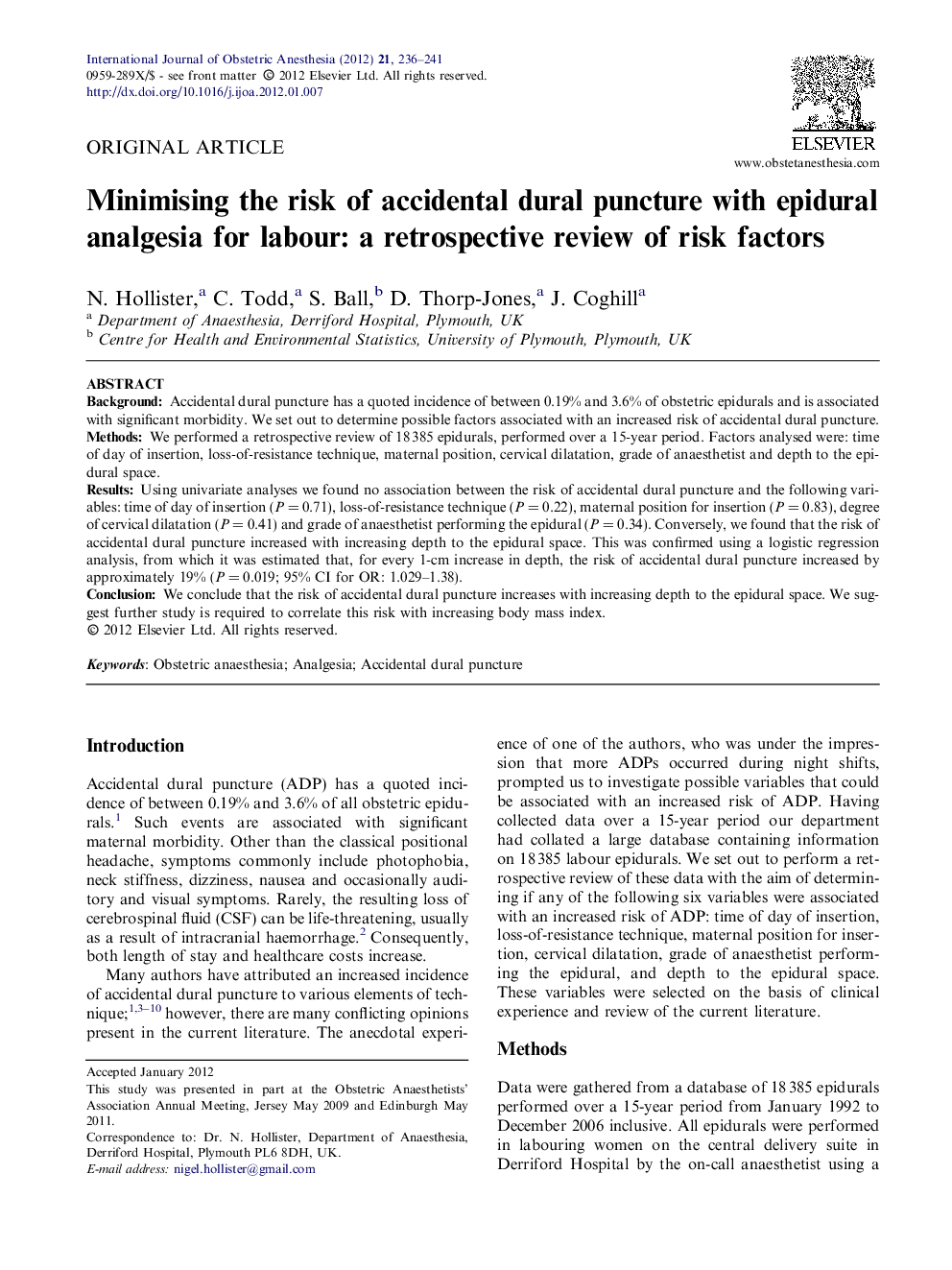| Article ID | Journal | Published Year | Pages | File Type |
|---|---|---|---|---|
| 2757608 | International Journal of Obstetric Anesthesia | 2012 | 6 Pages |
BackgroundAccidental dural puncture has a quoted incidence of between 0.19% and 3.6% of obstetric epidurals and is associated with significant morbidity. We set out to determine possible factors associated with an increased risk of accidental dural puncture.MethodsWe performed a retrospective review of 18 385 epidurals, performed over a 15-year period. Factors analysed were: time of day of insertion, loss-of-resistance technique, maternal position, cervical dilatation, grade of anaesthetist and depth to the epidural space.ResultsUsing univariate analyses we found no association between the risk of accidental dural puncture and the following variables: time of day of insertion (P = 0.71), loss-of-resistance technique (P = 0.22), maternal position for insertion (P = 0.83), degree of cervical dilatation (P = 0.41) and grade of anaesthetist performing the epidural (P = 0.34). Conversely, we found that the risk of accidental dural puncture increased with increasing depth to the epidural space. This was confirmed using a logistic regression analysis, from which it was estimated that, for every 1-cm increase in depth, the risk of accidental dural puncture increased by approximately 19% (P = 0.019; 95% CI for OR: 1.029–1.38).ConclusionWe conclude that the risk of accidental dural puncture increases with increasing depth to the epidural space. We suggest further study is required to correlate this risk with increasing body mass index.
